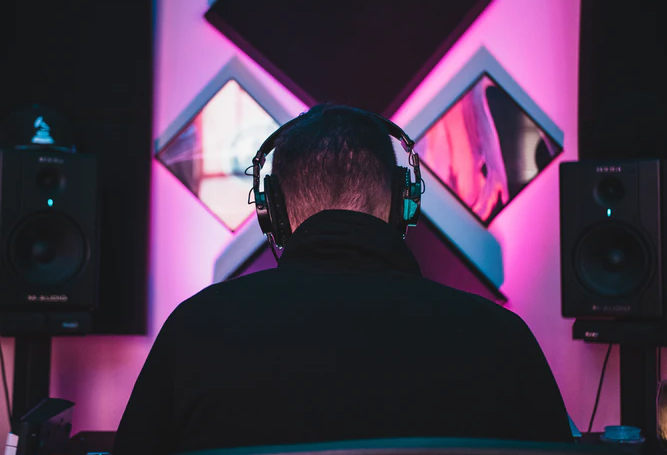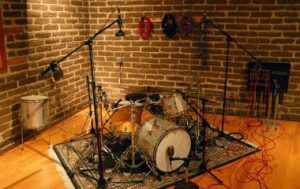
Drums & Bass — The Foundation
For the most part, low frequency sounds tend to work best when panned dead center. Because of their lack of directionality, and because they contain most of the energy in a typical mix, it’s best to keep these sounds in the middle of your mix.
Typically, in a rock or pop mix, the drums and bass are the first element most people address. Though there are no hard and fast rules, most mixes begin by setting up the stereo image of the drums from an audience perspective.
That means that, with a right-handed drummer, the kick and snare will be in the center, the hi-hat will be panned slightly right of that, and the overheads will be panned hard left and right.
Depending on how many toms and other toys the drummer has in his or her kit, it’s usually best to create a natural placement for each of them within the stereo spread. For example, if the drummer has three toms, I usually pan the middle one dead center and the other two at around 9 to 10 o’clock and 2 to 3 o’clock, depending on how wide a spread I’m looking for.
Of course, all of this assumes you’re miking the drum kit in what has become the standard recording technique, with individual mics on each drum, a pair of overheads, and perhaps even some distant mics to pick up room ambience. For the most part, you will find that the more you mix in the overheads and ambient room mics, the less actual “localized” definition your drums will have.

That said, one of the most interesting sessions I ever worked on involved only four mics on the kit — a stereo pair set up a few feet away from the kit, and an ambient pair about 15 feet away in the corners of the room. The producer was a well known old-school studio veteran, and we spent literally hours moving the mics by a half-inch here, and a quarter-turn there.
The resulting drum mix, though it certainly had some natural stereo ambience, was closer to mono in nature. And while you might associate that with a lack of depth, the result was anything but. In fact, less panning and less ambience will result in a bigger, more defined and in your face drum sound.
Stereo Guitars — A Few Tips
Mixing guitars in stereo is a great way to add depth to a mix, particularly in a very busy mix. Spreading out the guitar(s) will open up space for the bass and other center-panned parts.
Try dropping out some lower midrange to remove muddiness in the middle — especially on a dreadnaught or other large-body acoustic. Adding high end can also work, but will often accentuate finger noise.
Try recording acoustic guitar with a pair of directional mics with one pointing at the body just below the sound hole and the other at the top of the neck. Panning them at about 9 o’clock and 3 o’clock should give you a nice wide stereo image. Alternatively, try using a Mid-Side miking technique.

Doubling guitars is another nice way to add depth. Pan the original part to one side, add a delay (between 5 and 15 ms is a good place to start), and pan the delay return to the opposite side. A slightly different reverb and/or EQ setting will thicken them out even more.
Double-tracking the guitars manually (that is, actually recording the same part twice) can deliver even more interesting results. Try recording the same part using two different guitars. If that’s not an option, try recording the same part with a different tuning or a capo.
For example, if the song is in G, record the second pass with a capo on the 5th fret, playing in D. Or tune the guitar down a whole step and play the song in A.
Another way to double a guitar part that’s been tracked in mono is to send it back through a guitar amp and mic the amp from two different spots in the room with different mics. Alternatively, run the track through two different amps with different settings.
